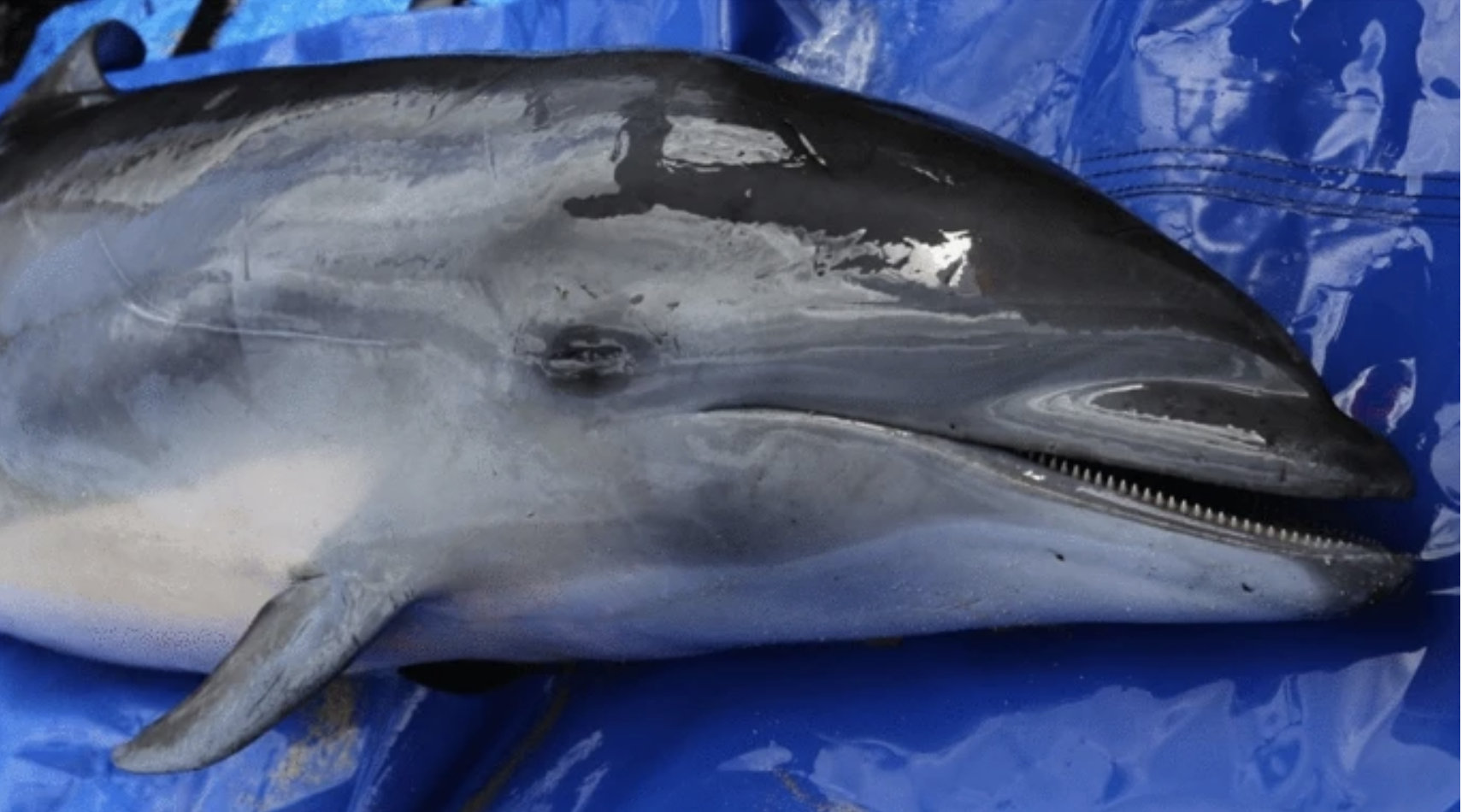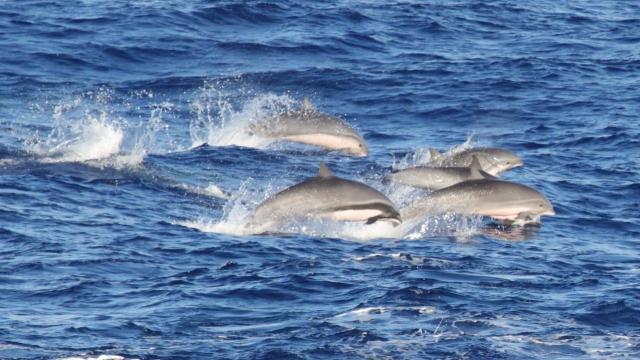Biologists in Hawaii have detected a previously unknown strain of cetacean morbillivirus, a pathogen that can cause deadly infections in marine mammals across the globe. The virus was detected in a lone Fraser’s dolphin — a highly social species — leading to concerns that the disease could spread and wreak havoc outside of the central Pacific ocean.
This male juvenile Fraser’s dolphin (Lagenodelphis hosei) became stranded off the coast of Maui in 2018, kickstarting a two-year investigation into its condition. Its body was in reasonably good shape, but its organs and cells showed signs of disease. A genetic analysis of cell cultures revealed the culprit: a “novel and very divergent strain of morbillivirus” that scientists were “previously unaware of,” as Krisi West, associate researcher at UH Mānoa’s Hawaiʻi Institute of Marine Biology, explained in a press release.
Only a handful of cetacean morbillivirus strains are known to exist, but they’re bad news, causing deadly outbreaks among marine mammals, including cetaceans (the group that includes both dolphins and whales) around the world. Other species in the Morbillivirus genus include the virus that causes human measles and the virus behind canine distemper. Details of the research are published today in Scientific Reports.

Fraser’s dolphins are highly social and friendly, and they’re known to intermingle with other dolphins and whales. Accordingly, Fraser’s dolphins, an oceanic species, could bring this highly infectious pathogen to other parts of the world, requiring marine wildlife managers and conservationists to be on guard.
“It’s also significant to us here in Hawaiʻi because we have many other species of dolphins and whales — about 20 species that call Hawaiʻi home — that may also be vulnerable to an outbreak from this virus,” West added. “An example is our insular endangered false killer whales — where there is only estimated to be 167 individuals remaining. If morbillivirus were to spread through that population, it not only poses a major hurdle to population recovery, but also could be a threat to extinction.”
Indeed, this is a very serious matter. Two previous incidents involving novel morbillivirus strains resulted in high mortality rates among dolphins off Brazil and the west coast of Australia. In the Brazilian example, over 200 Guiana dolphins are believed to have died of the disease from November to December 2017.
The authors of the new study say more research is needed to test immunity rates among dolphins and whales in the central Pacific, as this could help to establish the rate of prior infections and scope of the outbreak. Getting a handle on this disease won’t be easy, however. The UH Health and Stranding Lab manages to recover less than 5% of cetaceans that die in Hawaiian waters. The team is asking the public to report sightings of dead and distressed marine mammals to the NOAA Marine Wildlife Hotline.
Encouragingly, a mass immunisation campaign might be possible. As the press release points out, NOAA has been working on a morbillivirus vaccination program to create herd immunity among Hawaii’s endangered monk seals. It’s even more encouraging to know that vaccine hesitancy among oceanic dolphins won’t be an issue.
